Types and Functions of Consumables Commonly Used in Biological Laboratories

Types and Functions of Consumables Commonly Used in Biological Laboratories
Biological laboratories rely on a wide array of consumables to conduct experiments efficiently and accurately. These consumables, ranging from pipette tips to culture media, play crucial roles in daily lab operations. This article provides an overview of the most commonly used consumables in biological laboratories and their functions.
1. Pipette Tips
Types:
- Standard Tips: Used for general liquid handling.
- Filter Tips: Equipped with a filter to prevent cross-contamination and protect pipettes from aerosols.
- Low Retention Tips: Designed to reduce the adhesion of liquid to the tip, ensuring accurate dispensing.
Functions: Pipette tips are essential for transferring precise volumes of liquid. They are used in various applications, including preparing solutions, setting up PCR reactions, and conducting assays.
2. Microcentrifuge Tubes
Types:
- Standard Tubes: Typically hold volumes from 0.5 mL to 2.0 mL.
- Low Binding Tubes: Reduce sample loss by minimizing the binding of proteins and nucleic acids to the tube walls.
- Sterile Tubes: Pre-sterilized for use in aseptic applications.
Functions: These tubes are used for the storage, centrifugation, and handling of small volumes of liquid samples. They are indispensable in molecular biology for processes like DNA extraction, RNA isolation, and enzyme reactions.
3. Petri Dishes
Types:
- Standard Petri Dishes: Made of plastic or glass, used for culturing microorganisms.
- Tissue Culture Dishes: Treated to support the attachment and growth of animal cells.
Functions: Petri dishes provide a sterile environment for the growth and study of microorganisms and cell cultures. They are widely used in microbiology, cell biology, and genetics.
4. Culture Media
Types:
- Agar Plates: Solid medium for microbial growth.
- Liquid Broths: Nutrient solutions for cultivating bacteria and yeast.
- Specialized Media: Formulated for specific organisms or experimental conditions, such as selective or differential media.
Functions: Culture media supply the necessary nutrients for the growth and maintenance of microorganisms and cells. They are crucial for isolating pure cultures, conducting antimicrobial tests, and performing various biological assays.
5. Centrifuge Tubes
Types:
- Conical Tubes: Ranging from 15 mL to 50 mL, commonly used for centrifugation and sample storage.
- Microcentrifuge Tubes: Smaller volumes, typically 1.5 mL to 2.0 mL, for microcentrifuges.
Functions: These tubes are designed to withstand high centrifugal forces and are used to separate components of a mixture based on density. They are essential for preparing samples in molecular biology, biochemistry, and clinical diagnostics.
6. Disposable Gloves
Types:
- Latex Gloves: Offer good dexterity and comfort but can cause allergic reactions.
- Nitrile Gloves: Latex-free, providing chemical resistance and durability.
- Vinyl Gloves: An economical option for low-risk tasks.
Functions: Gloves protect both the user and the samples from contamination. They are vital for maintaining aseptic conditions and ensuring safety when handling hazardous materials.
7. Serological Pipettes
Types:
- Plastic Pipettes: Disposable, for general use.
- Glass Pipettes: Reusable, for more precise liquid handling.
Functions: Serological pipettes are used for accurately measuring and transferring larger volumes of liquid, typically in cell culture and microbiological applications. They are often used with pipette controllers or pumps.
8. PCR Tubes and Plates
Types:
- Individual Tubes: For single PCR reactions.
- Strip Tubes: Connected tubes, typically in strips of 8 or 12, for multiple reactions.
- PCR Plates: 96-well or 384-well plates for high-throughput PCR.
Functions: These consumables are specifically designed to withstand the thermal cycling of PCR. They ensure uniform heat distribution and minimal evaporation, which are critical for the amplification of DNA and RNA.
9. Cell Culture Flasks and Plates
Types:
- T-Flasks: For large-scale cell culture.
- Multiwell Plates: Available in various formats (6, 12, 24, 96, and 384 wells) for simultaneous culturing and analysis of multiple samples.
Functions: These vessels provide a sterile environment for the growth and maintenance of cells. They are essential for cell biology research, drug testing, and tissue engineering.
10. Disposable Loops and Needles
Types:
- Plastic Loops: Pre-sterilized and disposable, available in different sizes for streaking and picking colonies.
- Metal Loops and Needles: Reusable, can be sterilized by flaming.
Functions: These tools are used for inoculating culture media with microorganisms. They are crucial for tasks such as isolating pure cultures and transferring bacteria.
Conclusion
Consumables are the backbone of laboratory operations, enabling precise, accurate, and safe experimental procedures. Understanding the types and functions of these consumables helps researchers select the appropriate tools for their specific needs, ultimately contributing to the success and reliability of their experiments.

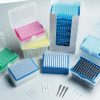
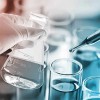
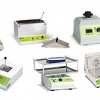

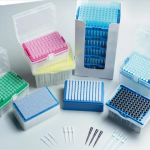
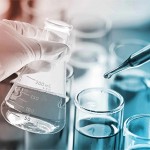








1 Comment(s)
paris
Leave a Comment